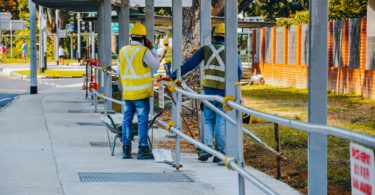A case for rethinking, reshaping and challenging our fit-out and refurbishment approach
Pre-manufactured structures have been around for a very long time. One of the first known examples is the Sweet Track walkway in the United Kingdom, made of pre-fabricated timber components, which was built back in 3807 B.C. More contemporary examples range from the Crystal Palace in London to the Lustron Homes of North America in the late 1940s.
However, there is a paucity of literature on pre-manufactured interiors. Perhaps an early example is the use of flat and sliding screens to define interior space—most associated with the Japanese shoji—which appeared in China circa 400 B.C. More recently, this is associated with concepts such as Action Office, the open-plan office system with adjustable, modular furniture that created the much-despised office cubicles of the 1960s.
Other ambitious projects include the Dymaxion House, originally designed by Buckminster Fuller in 1930, and redesigned in 1945, to be mass-produced, sustainable autonomous single-family dwellings that are earthquake and storm resistant. Supported by a central column from which all permanent utility cables would be suspended, it allowed the rest of the interior space to remain modular and flexible. Notably, the Dymaxion House was conceived to be entirely factory built, using processes, materials and technology commonly found in automotive factories of the day. It was to be the living machine of the future that could be flat-packed and shipped anywhere in the world. Although never built, the Dymaxion’s design demonstrated forward-thinking and influential innovations in prefabrication and sustainability.

To read the complete article, register your details above
to be notified once the revamped Construction Plus App is ready!

JAMES PARK
Founder and Principal, JPA Design
Park is primarily involved in business development and providing overall direction to JPA’s Singapore, UK and Dubai offices, as well as facilitating selected far-reaching projects.
Graduating from the Architectural Association, he set up James Park Associates in the early 1980s. In its early days, the firm was involved with transport interiors, most notably the re-designs for the iconic Venice-Simplon-Orient Express and, subsequently, the design and engineering for the Eastern and Oriental Express in Singapore. As a result, James Park Associates Pte Ltd was born in Singapore, growing from a small interiors and architectural consultancy to one specialising in premium environments for the hospitality and transportation sectors.

 Malaysia
Malaysia Hong Kong
Hong Kong Indonesia
Indonesia Tiếng Việt
Tiếng Việt ประเทศไทย
ประเทศไทย










